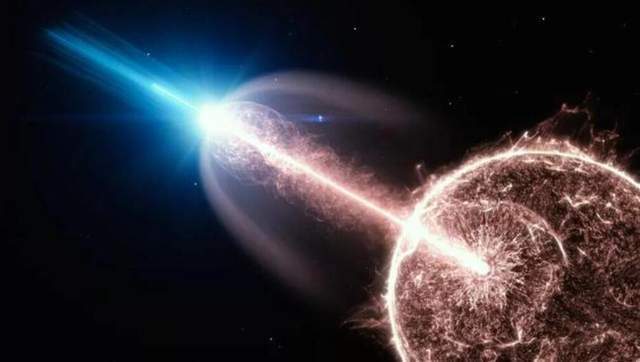For example, in the Big Dipper that we are more familiar with, the farthest “Tianshu” is only 123 light-years away from the earth, and the brightest star in the night sky, Sirius, is only 8.6 light-years away from the earth, and The distance between Polaris and us is only 434 light-years at most.
However, the range of 1000 light-years is only suitable for relatively ordinary stars. If a celestial body is particularly bright, it is possible for us to see it directly even if it is very far away from us, so the problem arises. The farthest celestial body visible to the naked eye is far from the earth. How many light years are there?

In astronomy, there is a concept of “apparent magnitude”. In simple terms, “apparent magnitude” describes the brightness of celestial objects that we directly observe with the naked eye. This concept was first introduced by the ancient Greek astronomer Hipparchus. He proposed that he divided the many stars in the star catalogue he compiled into 6 grades according to their brightness, of which the 1st-magnitude stars are the brightest, and the 6th-magnitude stars are the darkest.
Modern astronomy has quantified the “apparent magnitude”. According to the definition, the difference in brightness between two adjacent magnitudes is 2.512 times. In addition, modern astronomy has also greatly broadened the numerical range of “apparent magnitude”. , and introduced negative numbers, for example, the “apparent magnitude” of the sun is -26.7, and the “apparent magnitude” of the full moon is -12.8.
The larger the value of “apparent magnitude”, the lower its brightness. It is generally believed that a celestial body with an “apparent magnitude” of 6 is the darkest celestial body visible to the naked eye, so we can think that the farthest celestial body visible to the naked eye , is actually the celestial body that is farthest away from us and whose “apparent magnitude” is less than or equal to 6.

Among the known stars, the one that best meets this condition should be the “Canopy III” located in the constellation Cassiopeia. This star, also known as “V762 Cassiopeia” (V762 Cas), is a red supergiant star whose “viewpoint” Magnitude” is 5.86 and is about 14,818 light-years from Earth.
In addition to stars, there are also some extragalactic galaxies visible to the naked eye in the night sky. The most distant one is the “Triangulum Galaxy” (M33 galaxy), which has an “apparent magnitude” of 5.72 and is about 3 million light-years away from the earth. , with a diameter of about 61,000 light-years, is the third largest galaxy in the Local Group of galaxies (the first and second are the Andromeda Galaxy and the Milky Way, respectively).

So is this the limit? the answer is negative.
When high-energy events such as supernova explosions and neutron star collisions occur in the universe, extremely powerful gamma-ray bursts and high-speed particle streams with speeds close to the speed of light are usually generated. Although gamma rays are invisible to the naked eye, high-speed particle streams can It slams into the interstellar matter nearby, producing visible light so intense that we can see it directly with the naked eye from hundreds of millions or even billions of light-years away.

In the past few days, astronomers have observed such a phenomenon many times. The most distant one happened on March 19, 2008. On this day, the “Swift” satellite orbiting over the earth suddenly Gamma-ray bursts from the direction of the constellation Boes were observed, and the related observation equipment on the ground was quickly aligned in this direction.
The visible light produced by this high-energy event was observed shortly after, and the observation data showed that its “apparent magnitude” peaked at about 5.7 and lasted about 30 seconds.

That is to say, under good observation conditions, if we look up at the sky at this point in time, we can see a faint “star” suddenly appeared in the direction of the constellation Boe, but after about 30 seconds, this star The “star” disappeared.
The gamma-ray burst was numbered “GRB 080319B”. Subsequent research showed that the distance between its emission source and the earth was as high as 7.5 billion light-years, which also became a new record for “the farthest celestial object visible to the naked eye”. It has been maintained to this day.
Separated by 7.5 billion light-years, the light it emits can be seen directly by the naked eye. What is the concept of this brightness? Let’s put it this way, if “GRB 080319B” is placed in the position of the sun, then its “apparent magnitude” will reach -67.57, which is about 223 million times the brightness of the sun seen on the earth, I have to say , this is really amazing, what do you think?



GIPHY App Key not set. Please check settings